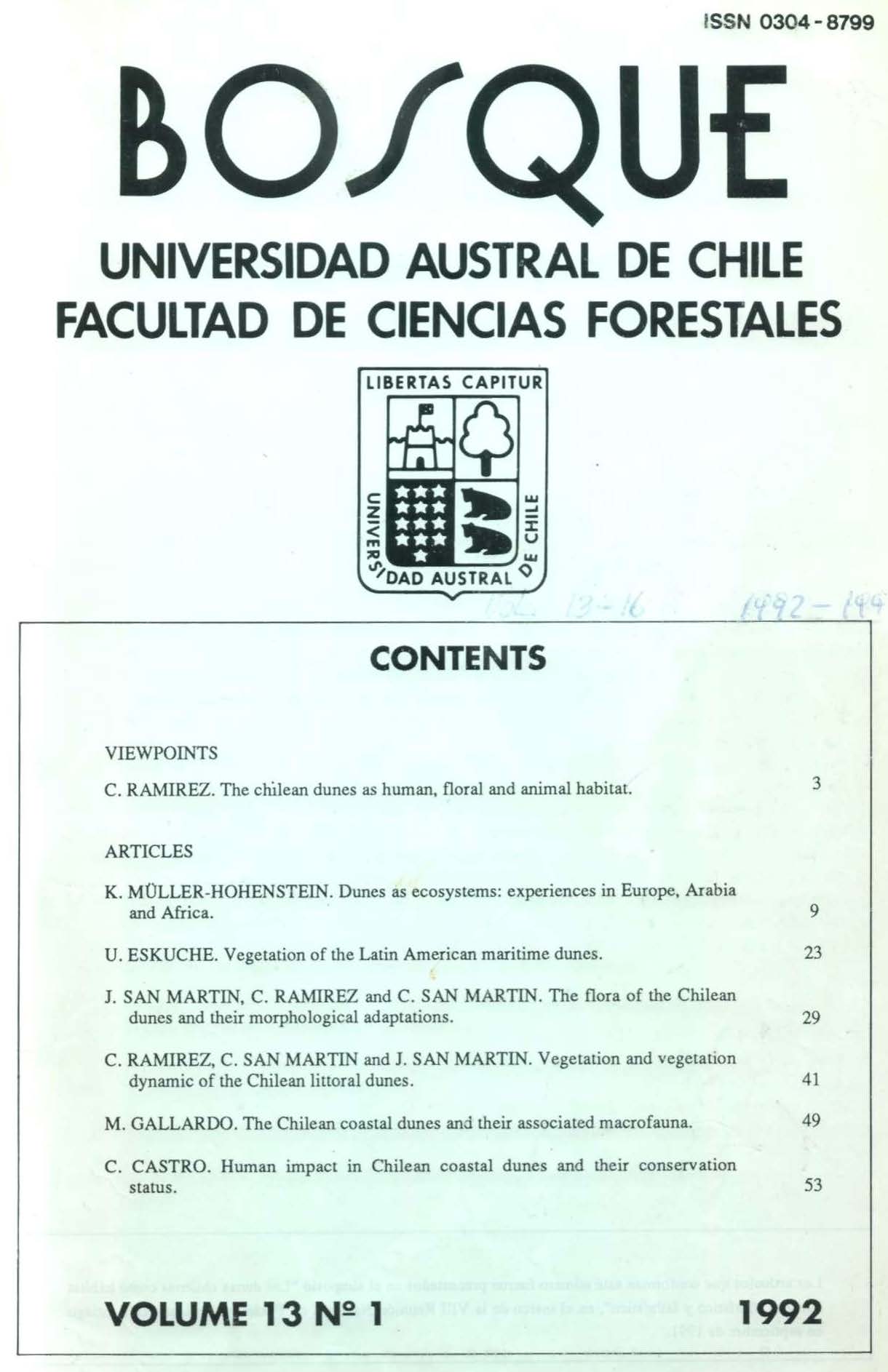Vegetation and vegetation dynamic of the Chilean littoral dunes
Main Article Content
Abstract
The Chilean littoral dunes are formed by erosion processes of agricultural soils, with the rivers transporting the sediment to the sea. Here, the nutrients are dissolved and the washed soil is returned to the littoral where it is spread by the wind when dry. Dunes cover a great part of the Central zone of Chile where there is great agricultural activity. Once stabilized, the dunes are covered by a vegetation which is described on the basis of 5 formations and 21 vegetable associations. Primary dunes, formed near the sea, have few species and a low coverage. The influence of salt water does not allow a latitudinal differentiation. Therefore, only the Nolanetum paradoxae association exists. Secondary dunes are dryer and therefore more extreme, with an unstable substrate, dry and lacking nutrients. Its vegetation has few species, low coverage and 4 associations with little latitudinal variation. Terciary dunes are shrubby, more stable and humid. Therefore, the number of species and coverege increases. 8 associations are found with clear latitudinal differentiations. In older terciary dunes, completely consolidated with organic soil, forests and esclerophylic shrubs (each with 2 associations) are found. Lastly, in depressions of interior dunes, 4 brackish palustrian communities with Ciperaceans, which sometimes surround lakes or lagoons, are found. The zonation of these associations is described and their dynamic relationships in the vegetational sucession are described.

